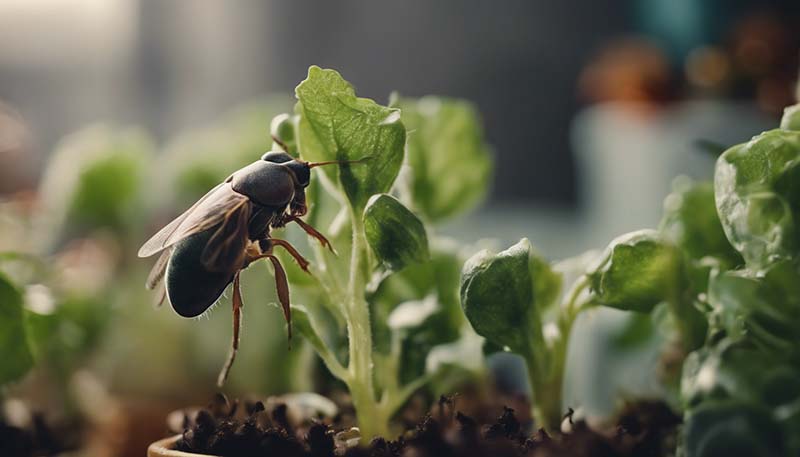Indoor Gardening: How to Deal with Pests and Diseases
Indoor gardening offers the perfect environment for growing a variety of plants all year round. However, it also creates a cozy habitat for pests and diseases that can wreak havoc on your greenery. Understanding how to identify and manage these issues is crucial for maintaining a healthy indoor garden.
Identifying Common Pests
Pests are small creatures that can cause significant damage to your plants. Here are some common indoor garden pests and signs of their presence:
1. Aphids
These tiny insects are often found on new growth and can cause leaves to curl, yellow, or become distorted. They also leave a sticky residue known as honeydew.
Advertisement
2. Spider Mites
Almost invisible to the naked eye, spider mites create fine webbing on leaves and can cause leaves to speckle, yellow, or drop off.
3. Whiteflies
Whiteflies resemble tiny white moths and congregate on the undersides of leaves. They can cause leaves to turn yellow and become distorted.
4. Mealybugs
These pests appear as small, white, cottony masses on stems and leaves and can cause leaves to yellow and curl.
5. Scale Insects
Scale insects are small, immobile pests that attach to stems and leaves, often appearing as small bumps. They can cause yellowing and wilting of leaves.
Diagnosing Plant Diseases
Plant diseases are often caused by fungi, bacteria, or viruses and can manifest in various ways:
1. Leaf Spots
These are dead spots on leaves that can be black, brown, or tan and may have a yellow halo around them.
2. Powdery Mildew
A fungal disease that appears as a white or gray powdery substance on leaves and stems.
3. Root Rot
Caused by overwatering, root rot results in yellowing leaves, wilting, and a musty smell from the soil.
4. Viral Diseases
Viruses can cause a range of symptoms, including mosaic patterns on leaves, stunted growth, and yellowing.
Prevention and Control Measures
Preventing pests and diseases is easier and more effective than trying to cure an infestation or infection. Here are some strategies:

1. Start with Healthy Plants
Purchase plants from reputable nurseries and inspect them for signs of pests or disease before introducing them to your indoor garden.
2. Maintain Good Hygiene
Clean your pots, tools, and work surfaces regularly to prevent the spread of disease and pests.
3. Provide Proper Care
Ensure your plants receive the right amount of light, water, and nutrients to keep them healthy and resilient.
4. Monitor Your Garden Regularly
Regularly inspect your plants for signs of pests or disease and act quickly if you spot any issues.
5. Use Natural Predators
Introduce beneficial insects, such as ladybugs and lacewings, which can help control populations of pests like aphids and spider mites.
6. Apply Organic Pest Control
Use organic sprays or solutions, such as neem oil, insecticidal soap, or a mixture of water and mild dish soap, to control pests.
7. Isolate Infected Plants
If a plant becomes diseased, isolate it immediately to prevent the spread to other plants.
8. Prune and Dispose of Affected Plant Parts
Remove and dispose of diseased or infested leaves, stems, or entire plants if necessary.
9. Use Fungicides and Insecticides as a Last Resort
When organic methods fail, consider using chemical treatments, but always follow the label instructions and use them sparingly.
Conclusion
Dealing with pests and diseases in indoor gardening can be challenging, but with vigilance, preventive measures, and appropriate controls, you can maintain a thriving and healthy indoor garden. Remember, a healthy plant is your best defense against pests and diseases.
References:
- Ellis, B. (2019). Organic Gardening: A Master Guide. Rodale Books.
- BBC Gardening. (2020). Indoor Pests and How to Treat Them. Retrieved from
- Harrington, L. (2021). Indoor Gardening: The Ultimate Guide. Penguin Random House.
Comment